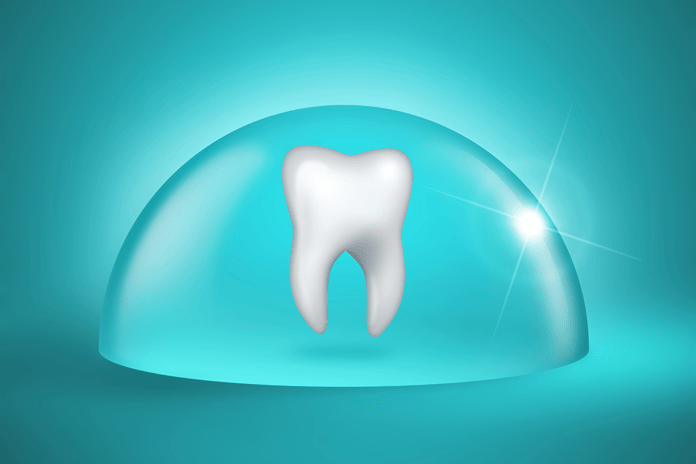As a practicing dental hygienist, I know every day I will fail to perfectly communicate the importance of diligent daily oral health care to a patient. I would like to believe that every single instance where a patient presents with gingivitis or incipient decay, I would be able to impress upon them the need to clean interdentally once, brush twice, and rinse with fluoride. Realistically, I know my priorities for each of my patients are not always in line with their own understanding of what needs to be addressed with regards to caring for their oral health.
Probably the most difficult scenario for me occurs when a patient presents with incipient decay, and the doctor recommends watching the tooth. The patient then hears things like “floss more,” or “rinse with a fluoridated mouthwash,” and “check it again in six months.” All of these are statements they hear during any routine exam, so how are they expected to differentiate between a regular check-up and a problem that needs to be addressed?
When there is no actual treatment planned by the dentist, the patient is left with a sense that all is right with the state of their oral health and teeth. But what if there was a way to treat incipient decay and simultaneously impress upon the patient the importance of not actively allowing the decay to progress?
Silver Diamine Fluoride
New products often elicit some anxiety among clinicians. Silver diamine fluoride, however, is pretty easy to treatment plan, discuss with patients, use, and to code.
Regarding treatment planning, one should consider that silver diamine fluoride is a topically applied fluoride; however, unlike a varnish, it is designed to be applied only to specific sites where there is active decay. This is due to the antibacterial qualities of the silver component. It can also be used to treat tooth sensitivity in much the same manner as fluoride varnish was used when it was first introduced. The only contraindications for application are known silver allergies and ulcerative gingivitis or stomatitis. This means clinicians can recommend this product for a majority of patients visiting their dental practice.
Once treatment is planned, the next step is educating the patient about silver diamine fluoride and obtaining informed consent for placement. The top questions patients ask about this product are as follows: If it is new, is it safe? Are there side effects? How much will it cost me?
Used globally for more than eighty years, silver diamine flouride is backed by a large amount of research on its efficacy. One study showed a 91% success rate in the arresting decay when the product was applied semi-annually. Each drop contains about 11.88 mg of silver diamine fluoride. That amount of fluoride is 1/10th the amount found in a typical fluoride varnish application, and the silver content is well below the amount set for weekly drinking water quantities. It is safe to use in combination with fluoride varnishes (as long as you allow a 60-second window for the liquid to absorb into the tooth before applying the varnish). Thus, patients do not have to worry about overexposure to either of the two major components.
Side Effects of Silver Diamine Fluoride
There is really only one side effect of using silver diamine fluoride, and that is staining. Any area where the material is applied and active decay is present; the decayed area will turn dark brown or black. Most patients are relieved to know that the whole tooth does not change color, only the areas affected by the decay. A cosmetic restoration can later be placed over the area to improve esthetics if desired.
Applying silver diamine fluoride is relatively straightforward. It is a liquid that may be placed under the same level of supervision as any topical fluoride. It can be applied to the occlusal, facial, buccal, and lingual surfaces with a microbrush, and to the interproximal areas with a spongy floss. Aside from some light isolation with a cotton roll or dry angle (mainly to keep the patient from tasting the product), there aren’t any tricks to placement. The product is even tinted blue before it dries so that the clinician can easily see it during application.
If the product comes into contact with the patient’s tissues (lips, cheeks, and gingiva), these areas will temporarily stain dark. Applying a 2 x 2 or cotton roll with some hydrogen peroxide to the area will lighten the stain immediately, or it will disappear within two to three weeks. Preemptively placing petroleum jelly around the lips when applying silver diamine fluoride using spongy floss prevents most “temporary tattoos” on patients. If any material gets onto your dental light, tray area, or countertop, it will also stain these surfaces. If you catch it before it dries, ammonia-based cleaners such as disinfecting wipes will usually do the trick to remove the stains. However, if you don’t catch the spill until hours later, Mr. Clean Magic Erasers® and a little elbow grease will usually do the trick.
Coding for the application of silver diamine fluoride is as easy as being as general or specific as you want when applying the code to the procedure. As was mentioned earlier, it is a topical fluoride but is used as either a desensitizer or to arrest a carious lesion. The D1208 Topical Application of Fluoride code can apply when used for either caries arresting or desensitization. If offices care to be more specific with their coding, then the D1354 Interim Caries Arresting Medicament Application would apply when using the product to address decay. For sensitivity, the D9910 Application of Desensitizing Medicament code may also be used. And, of course, there is always the D1999 Unspecified Procedure by Report for those who just aren’t sure which one applies in which situation. Each practice can determine which code, or combination of codes, best works for them.
Silver Diamine Fluoride is a Big Product for Something that Comes in Such a Tiny Bottle.
A magical silver bullet that will help dental hygienists everywhere sleep a little better at night knowing that there is a way to address incipient decay clinically that also opens the door to patient education on the subject. Prevention and education on the tip of a microbrush!
SEE ALSO: Halting the Decay Process: Silver Diamine Fluoride
DON’T MISS: Is Silver Diamine Fluoride the Key to Preventing Caries in Underserved Populations?
Now Listen to the Today’s RDH Dental Hygiene Podcast Below:
Silver Diamine Fluoride References
- Zhi et al. Randomized clinical trial on effectiveness of silver diamine fluoride and glass ionomer arresting dentine caries in preschool children. J.Dent. 2012 Nov; 40 (11):962-7. doi: 10.1016/j.dent.2012.08.002.
- Elevateoralcare.com. (2014). http://www.elevateoralcare.com/site/images/AA_PI_040715.pdf [Accessed 26 Nov. 2017].
- Horst et al. UCSF Protocol for Caries Arrest Using Silver Diamine Fluoride: Rationale, Indications and Consent. Journal of the California Dental Association. 2016 Jan; 44 (1): 17-27.
- The Silver Bulletin. Vol. 1. 2017 November 14. Professional communication, elevateprofessional@elevateoralcare.com.
- Magic Eraser® is trademarked by Mr. Clean, part of the P&G Family











